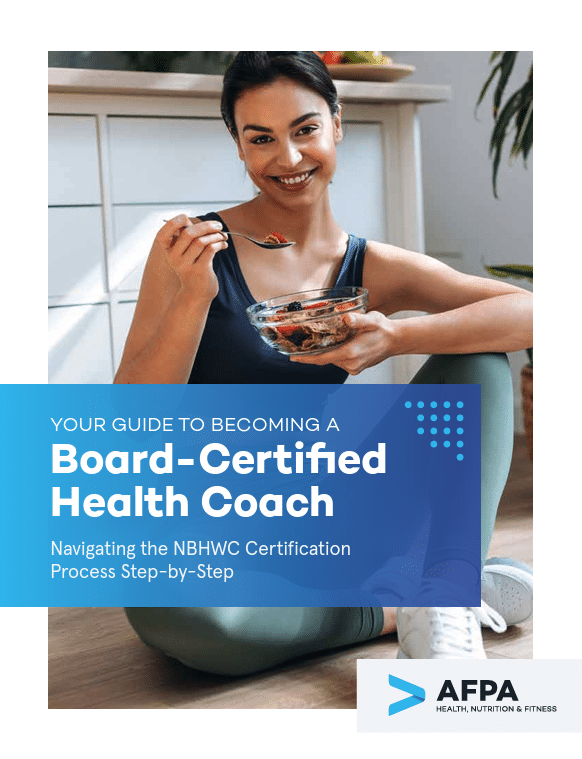The Start of a New School Year: An Opportunity for Wellness
For many families, the back-to-school season feels like a whirlwind. The slower pace of summer quickly gives way to packed schedules, early mornings, homework deadlines, sports practices, and after-school activities. It’s easy for healthy habits to slip when everyone is trying to keep up.
But here’s the good news: the start of a new school year is also a natural reset point, a perfect opportunity to help your clients create a holistic family wellness plan that supports the physical, mental, and emotional health of every family member. By approaching the season with intention, families can reduce stress, improve energy, and maintain balance.
In this guide, we’ll walk through how to build a back-to-school wellness routine that works for the whole family. From morning routines for kids to goal setting for kids, go back to school health tips for parents to stress management for families, you’ll find practical strategies to help your clients thrive this school year.
Shana Walsh, PhD, NBC-HWC, MCHES, and Director of Education and Curriculum at AFPA, notes, “It’s also important to remember that you don’t have to do everything at once. A long list of ideas can feel overwhelming, especially if you’re starting fresh. Encourage families to focus on just one or two habits at a time, knowing that even small changes can have a meaningful impact. Adopting one new healthy practice is still progress, and something is always better than nothing.”
Step 1: Set the Foundation with Family Wellness Goals
Before diving into schedules, meal plans, or activity calendars, it’s important to begin with clarity. Encourage families to step back and think about what they want their school year to look and feel like.
This is where goal setting for kids and adults alike becomes powerful. When a family sets clear wellness goals together, each member feels more ownership over the process, and there’s a shared sense of accountability.
By creating a shared vision, everyone feels invested. Goals might include eating more whole foods, spending more time outdoors, getting better sleep, or improving grades without burnout.
How to Guide the Goal-Setting Process
Start with a conversation. Ask each family member:
- What do your want our family’s health and wellness to look like this year?
- What’s one healthy habit you want to focus on this school year?
- How do you want mornings to feel in our home?
- What would help you feel your best physically, mentally, and emotionally?
Encourage specificity. Instead of broad statements like “I want to be healthier,” aim for measurable goals such as “I want to include a vegetable in my lunch every day” or “I will walk to school three times a week.”
Keep goals realistic. Overly ambitious goals can set families up for frustration. Focus on achievable steps and build over time.
Revisit regularly. Monthly check-ins allow for adjustments and keep goals from fading into the background.
When families work together toward a common vision, it strengthens connection while building motivation. And by focusing on building healthy habits one step at a time, the family can create lasting change rather than quick fixes.
Pro Tip for Professionals: Use a “family vision worksheet” during a coaching session to help clients capture their goals visually. This can be a fun, collaborative activity, especially when kids get to decorate it or post it somewhere visible at home.
Step 2: Prioritize a Consistent Morning Routine for Kids (and Adults)
A smooth morning can set the tone for the entire day, while a chaotic start can leave everyone feeling rushed and stressed. Creating a morning routine for kids, and sticking to it, brings a sense of calm and predictability to the household.
Elements of an Effective Morning Routine
- Preparation the night before: Clothes laid out, backpacks packed, lunches ready, and any forms or homework completed.
- Gentle wake-ups: Allow enough time to rise without rushing. Some families find success with natural light alarms or soft music.
- Nutritious breakfast: A balance of protein, fats, and carbs helps maintain energy and focus throughout the school morning.
- Time for connection: Even a brief chat over breakfast or a shared stretch before heading out the door helps strengthen emotional bonds.
This routine isn’t just for kids. Parents benefit too, and modeling organization and calm sets a positive example for the whole household.
Pro Tip for Professionals: Encourage clients to create a “morning flow chart” for younger children with pictures instead of words. This helps kids stay on track independently and reduces morning stress for parents.
Step 3: Support Back-to-School Mental Health
Academic performance isn’t the only measure of a successful school year. Emotional wellbeing is equally important, and the transition from summer to school can bring stress for both kids and parents.
Back to school mental health tips:
- Daily emotional check-ins: Ask open-ended questions about friends, classes, and feelings. Avoid yes/no questions and create a safe space for honest answers.
- Teach stress relief strategies: Breathing exercises, journaling, stretching, or quiet reading can help manage daily pressures.
- Balance activities: Encourage downtime between homework and extracurriculars to prevent burnout.
- Watch for warning signs: Changes in sleep, appetite, mood, or academic performance may indicate stress or anxiety.
For parents, self-care is just as critical. Parental stress can easily transfer to children, so managing their own emotional health is essential to family health and wellness.
Pro Tip for Professionals: Recommend age-appropriate mindfulness activities (short guided meditations for teens, sensory play for younger kids) to help the whole family strengthen emotional regulation.

Get Your Free Guide
Learn How to Start a Fulfilling, Impactful Career as a Holistic Health Coach
You’ll learn:
- Why holistic health matters
- If holistic health coaching is right for you
- What career opportunities exist for health coaches
- And more!
Step 4: Focus on Nutrition and Family Mealtimes
Nutrition plays a critical role in family health and wellness. When the schedule gets hectic, it’s tempting to lean on convenience foods, but a little planning can make healthy eating realistic.
Encourage clients to:
- Plan weekly menus that include a mix of colorful fruits and vegetables, whole grains, and lean proteins.
- Batch prep snacks like cut-up veggies, hard-boiled eggs, or yogurt parfaits for easy grab-and-go options.
- Cook together: Involving kids in the kitchen increases their interest in healthy eating and builds life skills.
Family mealtimes aren’t just about food, they’re about connection. Studies show that families who eat together regularly tend to have better nutrition habits and stronger emotional bonds.
Pro Tip for Professionals: Suggest clients set a realistic goal for family meals each week, maybe three dinners together, and use that time to check in with each other without devices.
Step 5: Make Movement Part of Everyday Life
Regular physical activity benefits focus, mood, and sleep, but it doesn’t have to mean hours at the gym or expensive sports programs.
Ideas for building healthy habits through movement include:
- Walking or biking to school when possible.
- Having short “movement breaks” during homework time.
- Scheduling weekend family hikes, bike rides, or active games.
By treating movement as an enjoyable part of life, not a chore, families create positive associations with being active.
Pro Tip for Professionals: Create a “family activity jar” for your clients. Fill it with slips of paper suggesting different active games, mini-workouts, or outdoor adventures so kids can randomly pick one on weekends.
Step 6: Teach Stress Management for Families
Stress is inevitable, but how a family responds to it makes all the difference. Stress management for families starts with identifying triggers and learning proactive coping strategies.
Encourage clients to:
- Keep schedules realistic to avoid overcommitment.
- Use family meetings to address problems openly and brainstorm solutions together.
- Practice gratitude daily. Sharing something positive at dinner can shift focus from stress to appreciation.
- Create a “calm corner” in the home for anyone needing a quiet break.
Helping families see stress management as a shared responsibility creates a supportive home environment where everyone feels heard and valued. These practices can help foster resilience and emotional balance.
Pro Tip for Professionals: Introduce clients to a “stress scale” tool. Each family member rates their stress from 1 to 10 daily to promote awareness and early intervention.
Step 7: Build Healthy Sleep Routines
Adequate sleep is crucial for academic success, emotional regulation, and overall health. The back-to-school shift often means earlier wake-up times, so planning for bedtime adjustments is key.
- Keeping bedtimes and wake times consistent, even on weekends.
- Turning off screens at least an hour before bed.
- Creating a calming bedtime ritual like reading, stretching, or light conversation.
A well-rested family is more patient, focused, and equipped to handle the demands of daily life.
Pro Tip for Professionals: Suggest clients track sleep for a week to identify patterns and make adjustments. This can also help spot hidden issues like late-night homework or device use.
Step 8: Maintain Flexibility and Perspective
Even the best routines will face disruptions: illness, schedule changes, or simply a busy week. The key is to view a family wellness program as a guide, not a rigid set of rules.
A missed workout or a takeout dinner isn’t a failure; it’s part of life. The goal is progress, not perfection. What matters is returning to health-promoting habits quickly and without guilt. This mindset shift can prevent all-or-nothing thinking and encourage long-term consistency.
Pro Tip for Professionals: Remind clients to celebrate small wins along the way! Acknowledging progress keeps motivation high even when life gets hectic.
Step 9: Revisit, Reflect, and Adjust
A successful wellness routine isn’t set in stone. Routines should evolve as needs change. Check in with families periodically to assess what’s working and what needs adjusting.
Encourage clients to revisit their plan throughout the year:
- Is the morning routine still working?
- Has the family maintained their nutrition goals?
- Are stress levels manageable?
Seasonal changes, school workload, and extracurricular schedules will shift, and routines should adapt accordingly. By staying flexible, families can continue to thrive no matter what the school year brings.
Pro Tip for Professionals: Schedule quarterly “wellness check-ins” with clients. These short sessions keep accountability high and allow for timely adjustments.
Measure Progress, Not Perfection
When families approach the back-to-school season with intention, they can create a rhythm that supports both academic success and emotional wellbeing. With the right approach, it can be a season of growth, connection, and improved health for the entire household.
Dr. Shana Walsh has another reminder: “While this blog post offers plenty of ideas, progress doesn’t have to be all or nothing. Choosing even one new habit can have huge benefits. As a health coach or wellness professional, you have the opportunity to guide families in developing routines that are realistic, adaptable, and rooted in holistic family wellness principles.”
Just like the first day of school sets the tone for the year ahead, the habits families establish now will ripple forward, shaping not only the school year, but the way they approach health and wellbeing for years to come.

Learn How to Set Yourself Apart as a Board-Certified Health Coach

Reviewed by
Dr. Shana Walsh
Dr. Shana Walsh is the Director of Education and Curriculum at AFPA. With a PhD in Kinesiology, Exercise Nutrition, and Health Promotion, she has served as an educator, author, and researcher. She is also a Registered Yoga Teacher, National Board-Certified Health and Wellness Coach, Master Certified Health Education Specialist, and Certified Personal Trainer. Shana has been teaching yoga for nearly a decade and has witnessed its profound impact on quality of life. She believes that when people improve their health, they improve their life, and she is committed to supporting others in taking steps toward positive change.

Leave a Reply